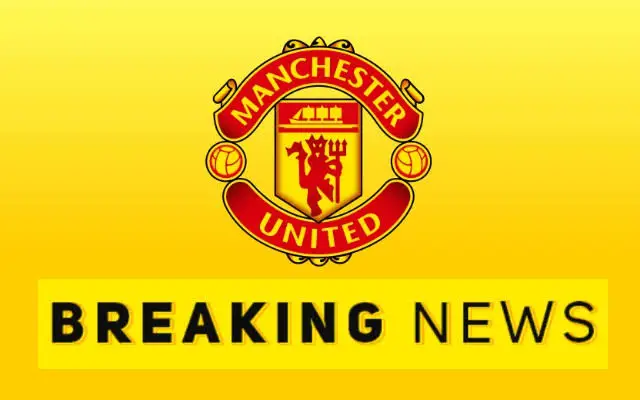“This three players won’t cost us up to £80m. It’s a blockbuster signing and they are very good players who could bring a lot of changes intonour first team”- Double signing, £60m deal and Euro 2024 gem as Sir Jim Ratcliffe set to confirm Manchester United can exploit after Erik ten Hag approval

Over the last four years, significant transformations have reshaped the landscape of the football transfer market, largely influenced by the enduring effects of the Covid-19 pandemic and the enforcement of stricter financial regulations within domestic leagues. These changes have had profound implications, particularly diminishing the influence of traditional powerhouse clubs on the continental stage.
While clubs like Bayern Munich and Real Madrid continue to assert their dominance by securing high-profile signings such as Harry Kane and Jude Bellingham in recent summers, others like Barcelona and Juventus find themselves grappling with substantial financial constraints. Barcelona, in particular, faces daunting debt issues exacerbated by stringent cost-control measures in La Liga, severely limiting their ability to compete aggressively in the transfer market. Similarly, Juventus, once a dominant force in acquiring top players, has witnessed a decline in their market influence.
In contrast, English Premier League clubs have demonstrated greater resilience in overcoming financial setbacks caused by the pandemic compared to their European counterparts. Initially maintaining their supremacy in the market, English clubs have increasingly engaged in intra-league player transfers as a notable trend. This strategic shift has seen clubs like Manchester City strategically offload talents such as Raheem Sterling, Oleksandr Zinchenko, and Gabriel Jesus to domestic rivals, reflecting a pragmatic approach to financial management and squad optimization.
Last summer, Manchester United capitalized on this trend by securing Mason Mount from Chelsea, marking a significant departure as their first paid acquisition from a top-six rival since Nemanja Matic’s transfer. This move underscores the evolving strategies employed by Premier League clubs to navigate the complexities of the modern transfer market.
An emerging trend in player contracts is the rising prevalence of release clauses, granting players more control over their career trajectories. These clauses offer players an opportunity to negotiate potential moves within specified financial parameters. Despite lucrative offers from clubs backed by wealthy investors, such as those in Saudi Arabia, many players in their prime remain cautious about such moves, preferring destinations that align with their sporting ambitions and competitive goals.
Bernardo Silva’s situation at Manchester City illustrates the intricacies surrounding release clauses. Despite having a release clause set around £50 million, his desired transfer to Barcelona remains unattainable at that price, highlighting the complex negotiations influenced by financial considerations and sporting ambitions.
Amidst these dynamics, young talents like Michael Olise are poised to benefit from release clauses embedded in their contracts. With a reported £60 million release clause likely to be activated by Bayern Munich, Olise represents a prime target for clubs looking to bolster their squads with promising young talent. Despite not being Manchester United’s top priority currently, Olise’s potential move highlights the strategic maneuvering prevalent in today’s transfer market.
Similarly, the case of Joshua Zirkzee, a 23-year-old striker with a €40 million release clause, underscores the appeal of cost-effective acquisitions for clubs navigating tight budgets. Zirkzee’s potential makes him an attractive option for clubs seeking to harness his talent and maximize value in the evolving landscape of European football.
Jeremie Frimpong, another emerging talent, has drawn attention with his performances at Bayer Leverkusen, where his €40 million release clause makes him an appealing prospect for clubs in need of reinforcements. The young Dutch attacking right-back’s pivotal role in Bayer Leverkusen’s domestic double-winning campaign enhances his appeal, potentially prompting clubs to explore his availability amid the allure of Champions League football.
Meanwhile, Nico Williams of Athletic Bilbao has also emerged as a noteworthy figure in the market, impressing with his displays against strong opponents like Italy. Despite recently signing a new contract, Williams retains a €55 million release clause, positioning him as a valuable asset for clubs seeking dynamic wing options. His recent form suggests that acquiring him could represent a wise investment in bolstering squad depth and attacking prowess.
While Manchester United currently boasts a squad featuring talents like Alejandro Garnacho and Marcus Rashford, the club remains attentive to the evolving preferences of players regarding contractual release clauses. This growing trend underscores the pivotal role these clauses play in shaping transfer negotiations and facilitating moves that align with individual career ambitions.
As clubs navigate the intricacies of the transfer market, the increasing prominence of release clauses reflects broader trends in player empowerment and strategic asset management. These developments underscore the evolving landscape of football economics and emphasize the need for clubs to adapt their recruitment strategies to balance financial prudence with competitive aspirations.




